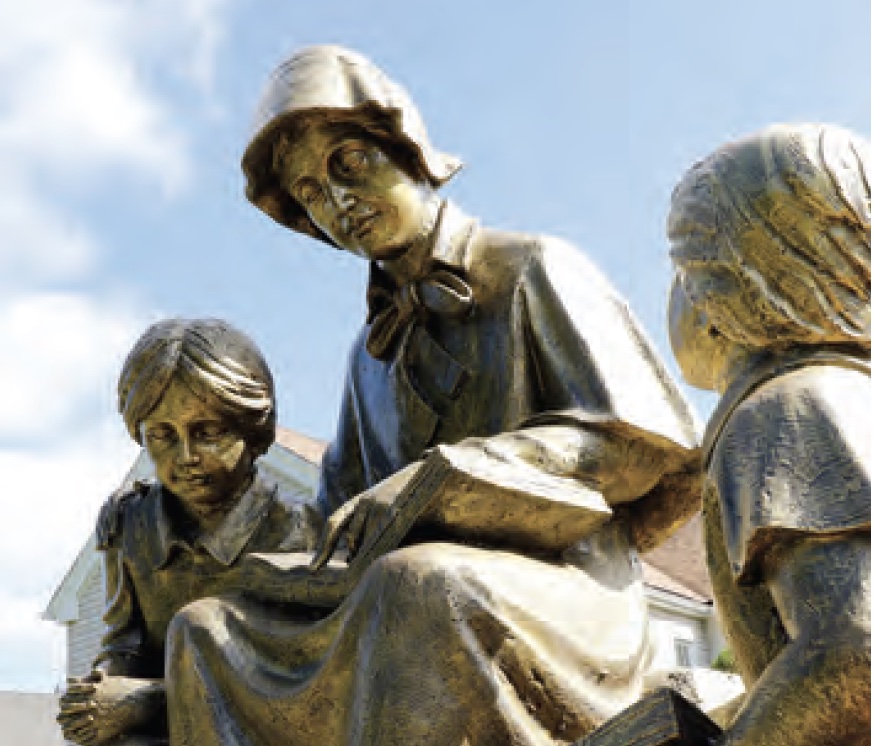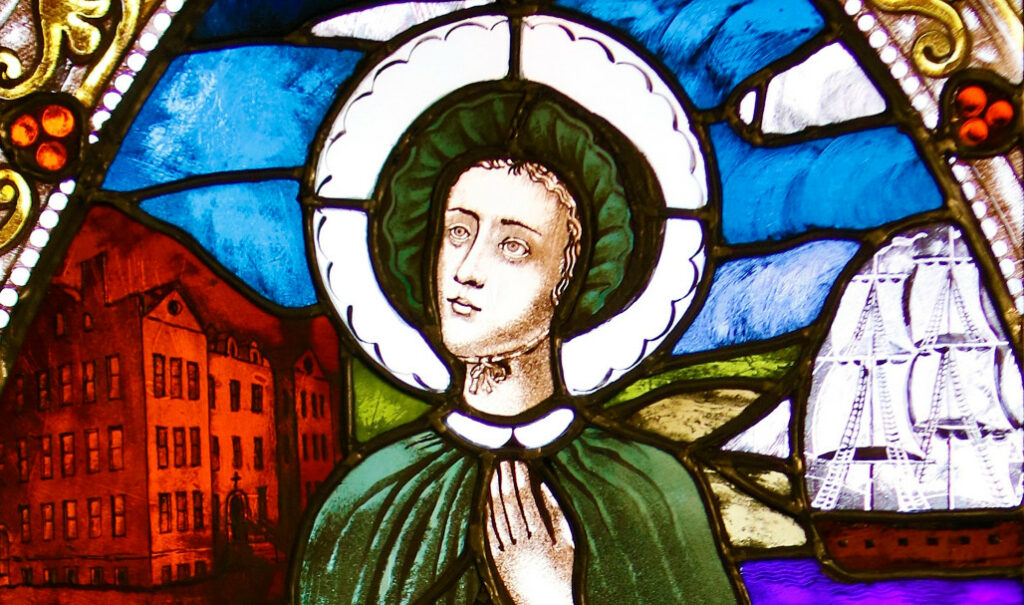1774-1821
Feast day: January 4
The power of Christ’s Eucharistic presence is what would transform the great suffering of a 29-year-old American widow who just buried her husband in a faraway land. Unknown to her, through this tragic circumstance, St. Elizabeth Ann Seton was on the path to becoming the first canonized saint to have been born on American soil.
The daughter of a Scottish-born physician, Elizabeth was born in New York City in 1774. As a 3-year-old girl, she became acquainted with suffering after her mother died, which prepared her well for a life of suffering that lay ahead. After she married the wealthy importer William Seton in 1794, Seton became the mother of five children. Stress from his business’ bankruptcy in 1802 worsened the tuberculosis Mr. Seton had contracted earlier, and doctors prescribed the Italian climate. Elizabeth would not leave his side, where she was when he died in an Italian quarantine two days after Christmas in 1803.
Since the couple originally planned to stay with William’s business partners in Italy, the young widow remained to enjoy their hospitality for some time until she could return to America. There, in the Filicchi family’s private chapel, Elizabeth had her first experience of Catholicism and the Eucharist. Witnessing their faith and devotion, particularly related to the Eucharist, Elizabeth wrote to her sister-in-law: “How happy we would be if we believed what these dear souls believe, that they possess God in the sacrament and that he remains in their churches and is carried to them when they are sick.” She came to find peace and solace in the Eucharist, writing later: “This Heavenly bread of angels removes my pains, my cares — warms, cheers, soothes, contents, and renews my whole being.”
Elizabeth’s life was forever changed. Fascinated by the Church’s liturgy and the Real Presence, the same committed Protestant who went to Italy would soon return to America with a Catholic heart. Seton’s conversion to Catholicism brought about many hardships. Hostility from her family was just the beginning of her sufferings in an anti-Catholic New York City. But returning to her Episcopalian parish there, she found herself gazing through the church’s window and focusing her prayer on Jesus in the nearby Catholic church’s tabernacle.
Fascinated by the Church’s liturgy and the Real Presence, the same committed Protestant who went to Italy would soon return to America with a Catholic heart.
Seton made the Profession of Faith and received her first holy Communion in March 1805 at St. Peter’s Church on Barclay Street, the city’s oldest parish. Later that night, she wrote in her journal: “At last GOD IS MINE and I AM HIS.” As a victim of prejudice, Seton had trouble finding stable work to provide for her family, and she wrestled about what to do.

CNS photo/Gregory A. Shemitz
God gave the answer when Seton was invited to Maryland by Sulpician Father William DuBourg. In the Catholic-friendly state of Maryland, Seton would establish a school and start a religious order. First teaching in Baltimore for a year, Seton pronounced religious vows in 1809 in the presence of America’s first bishop, John Carroll. He gave the foundress of the first religious order established in the United States the title “Mother Seton.” The Sisters of Charity of St. Joseph’s lived the Rule of St. Vincent de Paul’s Daughters of Charity with a few alterations from Carroll to provide for a mother with children to enter the new order.
Establishing a free school for poor girls near Emmitsburg, Maryland, proved to be a daunting, but not impossible task for Mother Seton. With guidance and assistance from Sulpician Father Jean Dubois — the future bishop of New York — Seton and her sisters opened St. Joseph’s Free School in 1810, and for this she is remembered as the mother of Catholic education in the United States.
Seton’s trust in God was undying, although it was tested in her final years on the rough Maryland frontier, especially when two daughters died of tuberculosis by 1816. Persevering in the Faith to the end, Seton exhorted those near her deathbed, “Be children of the Church.” She died of tuberculosis at the age of 46 on Jan. 4, 1821. Seton was canonized in 1975.
Michael R. Heinlein is editor of OSV’s Simply Catholic. He writes from Indiana. Taken from the “Inspired by the Eucharist” saint booklet.

